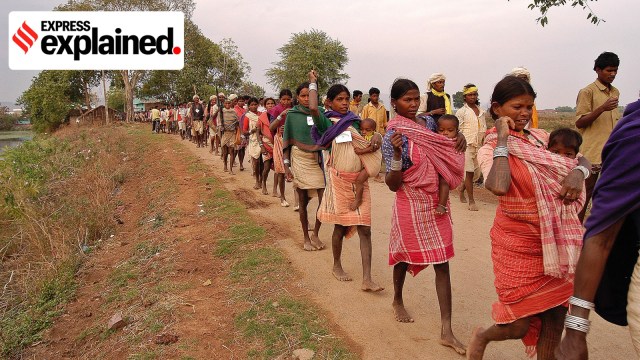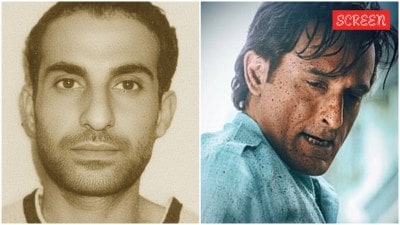The Ministry of Tribal Affairs (MoTA) wrote to the Registrar General and Census Commissioner of India (RGI) last month, requesting them to consider enumerating particularly vulnerable tribal groups (PVTGs) separately in the upcoming Census.

What are particularly vulnerable tribal groups?
PVTGs are a sub-category of Scheduled Tribes (STs), which show either a declining or stagnant population, geographical isolation, use of pre-agrarian practices (such as hunting and gathering), economic backwardness, and relatively low literacy.
This category was created based on the recommendations of the Dhebar Commission (1960-61) — led by former Member of Parliament U N Dhebar — which had investigated the various issues faced by STs, and in consultation with state governments. The Commission identified the disparity in socio-economic and living conditions between different tribal groups, and said that some tribal groups were more vulnerable than others.
Initially, 52 groups were identified as PVTGs (then known as Primitive Tribal Groups) during the Fifth Five-Year Plan (1974-1979), the MoTA told the Rajya Sabha in a written response to a query on March 19, 2025.
In 2006, the Centre added 23 more tribal groups to PVTGs, taking the total to 75. PVTGs are currently spread across 18 states, and the Union Territory of Andaman and Nicobar Islands.
Over the years, the criteria for identifying PVTGs have been questioned, especially the marker of geographical isolation.
Story continues below this ad
Kamal K Misra, former director of the Anthropological Survey of India, told The Indian Express that before conducting a separate enumeration, the government should revisit the inclusion criteria for PVTGs based on which groups have improved or worsened over the years.
Has a separate enumeration of PVTGs taken place before?
No, PVTGs have never been enumerated separately in any census. However, since PVTGs are a sub-category of STs, some among the 75 groups are counted under the broad ST category. This is because many PVTGs are not listed separately and grouped under one nomenclature. Moreover, there are state-specific lists of STs.
The MoTA told Lok Sabha in December 2016 that out of 75 PVTGs in the country, 40 have been scheduled as ‘single entry’. This means that they are explicitly listed in the notified list of STs under Article 342 of the Constitution.
For instance, in the 2011 Census, Baigas from Madhya Pradesh were enumerated separately. But not Abujh Marias, Bharias, Hill Korbas, Kamars. In 2013, Abujh Maria and Hill Korba were included in the ST list of Chhattisgarh in 2013, through a legislation in Parliament.
Story continues below this ad
According to established norms, the data of only main STs are tabulated and released by the RGI, which include the data/population of their sub-groups/sections/synonyms, as per the reply given in Parliament.
Is there an estimate for the number of PVTGs?
In November 2023, the government rolled out the Rs 24,104 crore PM JANMAN scheme with an aim to improve the socio-economic status, health, education, livelihoods and amenities for PVTGs in more than 200 districts.
To implement the scheme, the MoTA, along with state governments, collected habitation level data in a survey to estimate the PVTG population. This exercise also involved the identification of infrastructure gaps in PVTG habitations.
As per the survey, there were an estimated 47.5 lakh PVTGs across India. At 13.22 lakh, Madhya Pradesh had the highest estimated population of PVTGs, followed by Maharashtra with an estimated population of 6.7 lakh, and Andhra Pradesh had about 5.18 lakh PVTGs.
Story continues below this ad
As per the 2011 Census, 13 PVTGs, who were enumerated as part of the 40 single-entry STs, had a population of less than 1,000. These include Jarawas, Onges, Sentinelese, Shompens in the Andaman and Nicobar Islands, Raji in Uttarakhand, Kota in Tamil Nadu, Birhor in Odisha, Kamar in Madhya Pradesh, and Savar, Birhor, Birjia, Korwa, Parhaiya in Bihar.
With just 15 individuals, the Sentinelese had the fewest people in their community, and the highest, 4,14,526, were in the Baiga community, in Madhya Pradesh.
Government officials said that having an exact number along with demographic data would plug major gaps in the implementation of government schemes, especially in health and education initiatives. It will also help in understanding if PVTG classification criteria are still relevant, according to officials.








































